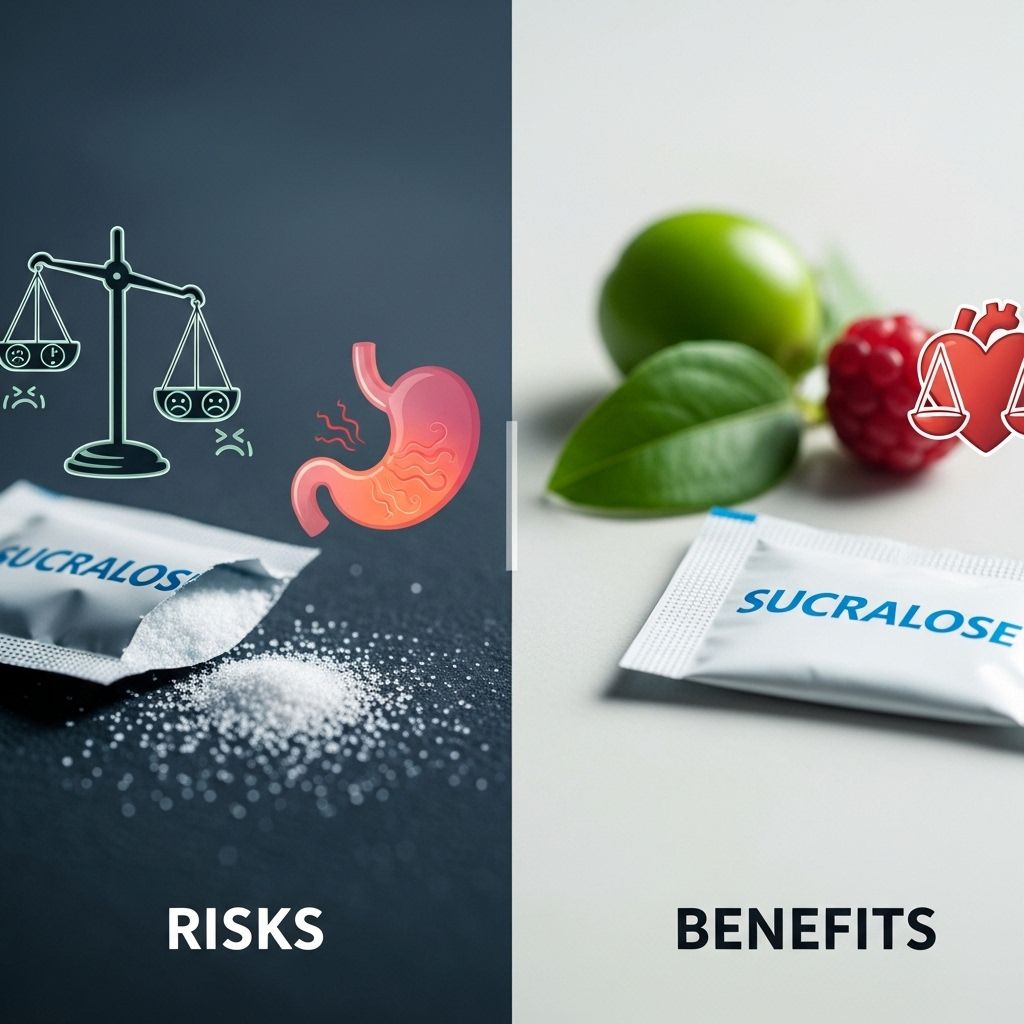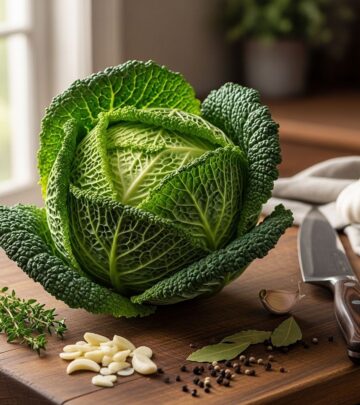Is Sucralose Bad for You? Exploring Its Health Effects, Risks, and Reality
Frequent use of zero-calorie additives may alter gut flora and disrupt metabolic balance.

Is Sucralose Bad for You?
Sucralose, widely known as the basis of popular sweeteners like Splenda, is one of the most extensively used artificial sweeteners globally. Marketed for its zero-calorie profile and stability at high temperatures, sucralose has become a mainstay in diet beverages, processed foods, and health products. However, over the past decade, research has increasingly scrutinized its effects on human health. This article thoroughly explores sucralose’s origins, how it’s metabolized, its possible benefits, and the health risks associated with ongoing use.
What Is Sucralose?
Sucralose is a synthetic compound derived from sugar (sucrose) by replacing three hydrogen-oxygen groups on the sugar molecule with chlorine atoms. This process creates a molecule that is about 600 times sweeter than sucrose but is not recognized or metabolized by the body as an energy source. Sucralose was discovered in 1976, and after extensive safety studies, was approved for use in foods and drinks by many regulatory bodies including the U.S. FDA, European Food Safety Authority (EFSA), and others.
- Brand names: Splenda is the most common commercial name.
- Sweetness profile: 600x sweeter than table sugar.
- Heat stability: Suitable for cooking and baking.
- Caloric content: Essentially zero, because it’s not metabolized for energy.
How Is Sucralose Used?
Sucralose appears in hundreds of products—soft drinks, candies, chewing gum, baked goods, protein shakes, and pharmacy formulations designed for diabetics and weight management. Food manufacturers prefer sucralose for its clean taste, inexpensive production, and versatility.
- Diet sodas and flavored waters
- Sugar-free gums and candies
- Low-calorie yogurts and desserts
- Meal replacements and sports supplements
Is Sucralose Safe? Regulatory Review and Acceptable Intake
International regulatory bodies have conducted extensive reviews and set guidelines for safe consumption. The Acceptable Daily Intake (ADI)—a level estimated to be safe over a lifetime—is:
- 15 mg/kg body weight per day (EFSA recommendation)3
For an average adult weighing 70kg, this would be about 1050 mg daily—much more than typical dietary exposure.
Key Regulatory Stances:
- FDA: Approved for use after nearly 100 studies concluded minimal toxicity or cancer risk at standard intakes.
- European Food Safety Authority (EFSA): Sets strict limits on sucralose-6-acetate, a potentially harmful byproduct.
How Is Sucralose Metabolized?
Unlike sugar, sucralose is mostly excreted unchanged in urine and feces. Only a small fraction is absorbed and metabolized, minimizing caloric value. However, new research shows a portion can be transformed by gut bacteria into compounds like sucralose-6-acetate, which may have different health effects2:
- Sucralose itself is largely unabsorbed and not metabolized for energy.
- Some sucralose is transformed by gut bacteria into sucralose-6-acetate, a compound linked to DNA damage and inflammation2.
Potential Benefits of Sucralose
- Weight management: Provides intense sweetness without calories—can support reduced sugar intake for weight loss or diabetes prevention.
- No effect on tooth decay: Unlike sugar, sucralose does not feed oral bacteria that cause cavities.
- Safe for diabetics (in moderation): Does not directly spike blood glucose in most healthy adults at typical intake.
The practical upsides have cemented sucralose in mainstream food production; however, these benefits must be weighed against possible health risks emerging in newer studies.
Emerging Research: Risks and Controversies
As sucralose’s popularity soared, scientists began examining possible negative effects stemming from both its chemical composition and interactions in the gut. Investigations now link chronic or high-dose sucralose intake with various metabolic, gut, and even cancer risks.
1. Effects on Insulin Sensitivity and Glucose Metabolism
- Recent human studies show that consuming sucralose especially with carbohydrates can significantly decrease insulin sensitivity even after just 10 days. This leads to higher blood sugar and may increase diabetes risk1.
- Chronic intake has been associated with changes in insulin secretion, possibly representing early signs of type 2 diabetes development1.
- Some studies report increased serum insulin and metabolic dysfunction after sucralose ingestion, even among healthy adults1.
2. Impact on Gut Health and Microbiome
One of the most significant emerging concerns is sucralose’s effects on the gut microbiota—the community of beneficial bacteria that regulate digestion, immunity, and overall health.
- Even quantities well below the ADI can disrupt the balance of gut flora, reduce beneficial bacteria, and increase pH levels in the colon3.
- Sucralose has been shown to damage the tight junctions that hold together intestinal cells, potentially causing a leaky gut2.
- A compromised gut lining can allow harmful molecules and microbes into the bloodstream, potentially contributing to inflammatory bowel disease and chronic liver disease2.
3. Body Weight, Obesity, and Metabolic Syndrome
- Paradoxically, some longitudinal studies show that regular sucralose consumption may be associated with weight gain and increased risk of obesity and metabolic syndrome—not the weight loss once promised13.
- Sucralose can promote lipid accumulation, elevate circulating fats, and dysregulate metabolic processes3.
4. Effects on Liver Function and Inflammation
| Evidence from Animal Studies | Findings |
|---|---|
| Rats fed with sucralose | Kupffer cell hyperplasia, hepatic fibrosis, lymphocyte infiltration |
| Mice exposed up to 18 weeks | Increased markers for liver and kidney dysfunction, reduced blood cell counts |
| Human gut tissue studies | Increased activation of genes related to inflammation and oxidative stress2 |
These findings raise concerns over possible long-term liver inflammation and damage from sucralose consumption, although direct evidence in humans is still emerging4.
5. DNA Damage and Cancer Risk
- New research shows that sucralose-6-acetate—a byproduct produced in both manufacturing and inside the gut—can cause DNA breaks. Lab studies indicate that exposure at realistic dietary levels might increase cancer risk by damaging cellular genetic material2.
- Animal studies demonstrate increased colon tumor size and number after regular sucralose intake, suggesting a link between sucralose, gut inflammation, and cancer development1.
- Some sucralose-derived compounds have been categorized as potentially carcinogenic due to chemical instability and accumulation3.
Other Reported Side Effects and Controversies
- Allergy risk: Although rare, some individuals report allergic-type reactions including hives and stomach discomfort.
- Headaches or migraines: Anecdotally, some sensitive users link sucralose intake to headaches, though strong scientific evidence is lacking.
- Sensitivity in children: Many experts recommend further caution when serving sucralose to young children due to incomplete data on developmental effects.
- Drug interactions: Sucralose has been shown in some studies to alter the activity of intestinal enzymes, possibly affecting the absorption or bioavailability of certain oral drugs taken with food3.
Is Sucralose Safe for Pregnant or Breastfeeding Women?
Current evidence does not show acute toxicity or dramatic teratogenic effects from sucralose at typical dietary levels. However, due to uncertainties about long-term metabolic and microbiome impacts, many health authorities recommend limiting intake during pregnancy and breastfeeding until more definitive research is available.
Daily Intake Recommendations
- General ADI: 15 mg/kg body weight (EFSA)3.
- Moderation: Most experts advise minimizing artificial sweetener intake as part of a balanced, primarily whole-food diet.
- Sensitive populations: Children, pregnant women, and those with pre-existing metabolic or liver conditions should exercise extra caution.
Practical Tips for Consumers
- Read labels carefully—sucralose may appear under names like E955, sucralose, or Splenda.
- Limit daily intake, especially if you also consume other sources of artificial sweeteners.
- Consider alternating with natural sweeteners like stevia, honey (in moderation), or fruit-derived options if possible.
- If you have pre-existing liver, metabolic, or digestive disorders, consult with your healthcare provider before introducing artificial sweeteners.
Summary Table: Sucralose’s Health Impact
| Aspect | Potential Benefit | Potential Risk |
|---|---|---|
| Weight Management | Zero calories; sugar reduction | Possible paradoxical weight gain, metabolic effects |
| Dental Health | No tooth decay | None reported |
| Glucose Metabolism | Safe for most diabetics in moderation | Decreased insulin sensitivity, higher diabetes risk |
| Gut Health | No benefit proven | Dysbiosis, gut barrier damage, leaky gut |
| Liver Function | No benefit proved | Inflammation, liver and kidney dysfunction (animals) |
| Cancer Risk | No benefit proved | DNA damage, possible carcinogenic risk |
Frequently Asked Questions (FAQs)
- Q1: Is sucralose safe in moderation?
- Most major food safety agencies consider moderate sucralose intake safe for healthy adults. However, emerging research on gut microbiome, liver inflammation, and DNA damage suggests caution, especially with chronic consumption above recommended limits.
- Q2: Does sucralose cause weight gain?
- While sucralose has no calories, some studies suggest it may paradoxically promote weight gain and metabolic disruption by affecting insulin sensitivity and gut flora balance.
- Q3: Is sucralose safe for diabetics?
- Sucralose does not directly increase blood glucose, but may negatively impact insulin response in some individuals. Diabetics should discuss artificial sweeteners with their healthcare provider.
- Q4: Can sucralose increase cancer risk?
- Some lab and animal studies link sucralose and its metabolite sucralose-6-acetate to DNA damage and increased tumor risk. Human studies are ongoing, but many experts recommend following established intake limits.
- Q5: What is the safest alternative sweetener?
- Natural options like stevia and monk fruit extract have fewer documented health risks. However, moderation is key with any sweetener, natural or artificial.
Takeaway: Should You Consume Sucralose?
Sucralose remains popular for its sugar-free sweetness, yet the expanding body of research highlights risks that warrant prudent caution. While occasional use within recommended limits is considered safe by most regulatory bodies, frequent or chronic intake—especially alongside carbs or processed foods—may pose significant health concerns. As science evolves, consumers are advised to balance potential benefits with risks, leaning toward natural, minimally processed foods and sweeteners whenever possible.
References
- https://usrtk.org/sweeteners/sucralose-emerging-science-reveals-health-risks/
- https://www.healthline.com/health-news/sucralose-a-common-artificial-sweetener-may-increase-cancer-risk
- https://www.frontiersin.org/journals/nutrition/articles/10.3389/fnut.2024.1387646/full
- https://pmc.ncbi.nlm.nih.gov/articles/PMC10971371/
- https://www.kentscientific.com/blog/new-research-with-mice-reveals-the-dangers-of-sweeteners/
- https://www.mayoclinic.org/healthy-lifestyle/nutrition-and-healthy-eating/in-depth/artificial-sweeteners/art-20046936
- https://www.nature.com/articles/s41586-023-05801-6
- https://www.fda.gov/food/food-additives-petitions/aspartame-and-other-sweeteners-food
Read full bio of medha deb












